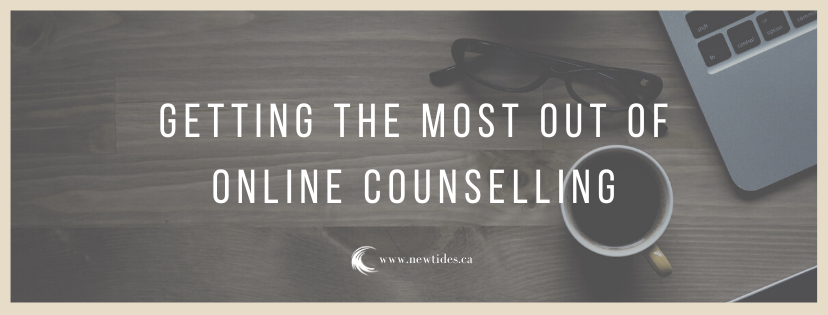Getting the Most Out of Online Counselling
With so many counsellors making the switch to online or video counselling recently, this switch can be jarring for clients (and for counsellors too!). Here are some quick tips to think about to make the most out of your sessions with your counsellor, especially if you initially wanted to stick to in person sessions but the wait became longer than expected!
Before Your Session
Setting Up Your Space
If you can, choose a space where you feel most comfortable in your home. If you have a calm pet nearby you can have them in the room as well!
Make sure you have what you need: Kleenex, a pad of paper and pen, headphones, your charging cord, any items that you find soothing (soft fabric, stress ball or smooth stones, essential oils etc.)
Focus: Focus can be tricky when you’re in your own space. Leave your phone off to the side, close all your other windows, turn off your e-mail/Facebook notifications and if ask to be disturbed as little as possible if you’re sharing space with others.
Internet: The higher quality the better! To improve your internet quality, you can restart your router before the session and turn off your phone or other devices connected to the internet while setting up as close to your router as possible, or plugging in with an ethernet cable. In my opinion this is the biggest determinant of online counselling working well for so many reasons!
Privacy and Confidentiality
If possible, find a private space in your home
if your space is less than soundproof, music, other sounds or fans in common areas can help maintain a sense of privacy
Transitioning In and Out of Sessions:
It can be so difficult to transition between so many different activities in a singular space!
My favourite way to start a session: either right before or at the beginning of your session, take a few moments to sit quietly, perhaps with your eyes closed, focusing on your breath or checking in on your internal world to see what’s happening in your body, emotions, thoughts etc.
Transitioning out of a session: set aside at least 15 minutes after a session to transition back into the rest of your day. This could look like journalling, taking a walk, a short yoga class, listening to music or having creative time etc.
Body Awareness & Movements
If your counsellor incorporates somatic work / body awareness into your counselling sessions, you may have to give your counsellor a bit of help communicating what’s happening in your body outside of the screen.
For example, you might notice that as you’re talking about your anxiety, or the day you had, that your foot starts to tap quickly. You might find it helpful to notice and mention this in passing to your counsellor as you’re continuing to chat.
Similarly, if your internet connection is on the slower side, you may have to make it more clear whats happening in your face and upper body as well! For example you might let your counsellor know when your breath starts to slow, or when you feel your face light up or when you feel yourself slowing down or getting ‘heavier’.
Becoming more aware and communicating what’s happening in your body is all great practice for you as well!
Getting Creative
If you’re having hard time making hour long online connections work, you may be able to explore other options with your counsellor. This may look like a ‘walk and talk’ session on the phone, a shorter 30 minute session to touch base and talk about coping, or even a video session in the car!
Permission
The transition to attending counselling online via video can be tough!
Let your counsellor know if you’re having a hard time, or if you have questions, or if you’re feeling anxious. All are totally normal things, but talking about it or doing some problem solving might be helpful.

